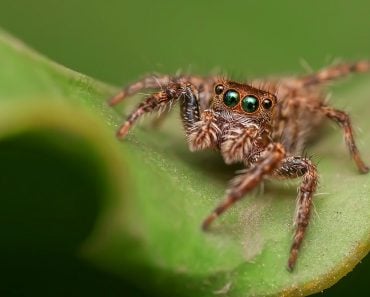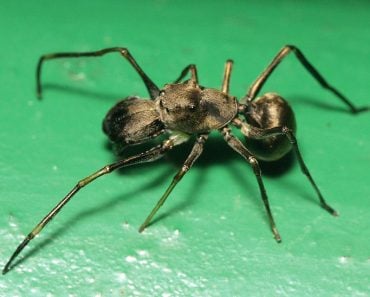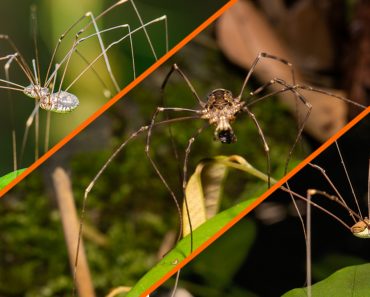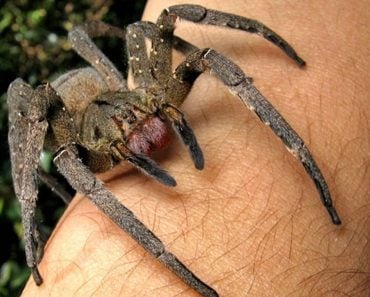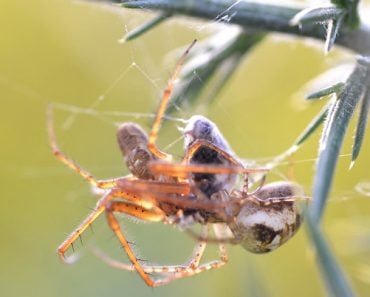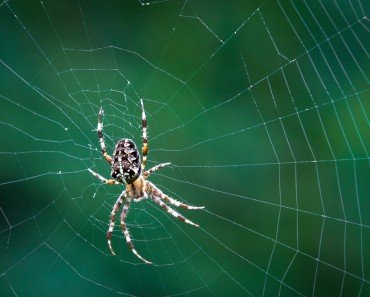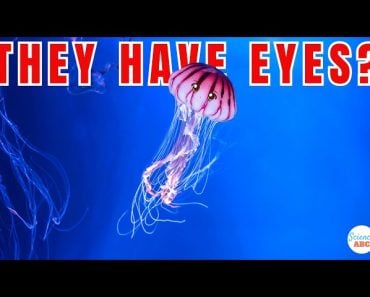Table of Contents (click to expand)
The diving bell spider has all the features of a typical terrestrial spider, but lives completely underwater. In fact, diving bell spiders are so good at living underwater that they have to come up to the surface of the water for air only once a day. They do this by creating a diving bell, a web structure between which an air bubble is trapped. The air bubble allows them to breathe air while still being underwater.
The diving bell spider, Argyroneta aquatica, is one of the only spiders that live completely underwater. Also known as the water spider, it is a rather interesting member within its spider family as it manages to survive underwater by creating its own unique air bubble home.
The diving bell spider has all the features of a typical terrestrial spider but is known to live constantly underwater, hence its unofficial name. Diving bell spiders are so good at living underwater that they have to come up to the water’s surface for air only once a day.
Recommended Video for you:
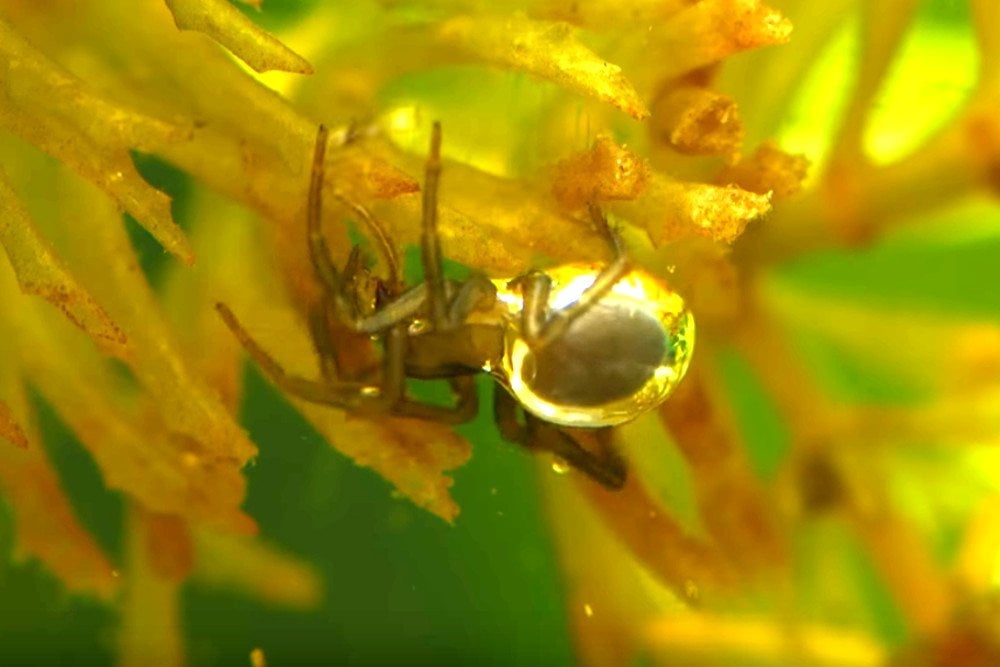 The diving bell spider (Photo Credit: Youtube)
The diving bell spider (Photo Credit: Youtube)Diving Bell Spider Anatomy
Female spiders range from 7.8 to 13.1 mm long, while male spiders range from 7.8 to 18.7 mm long. In most terrestrial spider species, the female is bigger than the male. But, this is reversed for the aquatic diving bell spider; the females are smaller than the males.
According to a 2005 paper by biologists Dolores Schütz and Michael Taborsky, the larger size of diving bell males gives them an advantage in moving underwater when they hunt or woo a mate. On land, being small is an advantage when it comes to hunting. Females are smaller because it’s easier to make a smaller bubble liveable for themselves and the babies.
Males can get away with being large yet building small bubbles because they only stick their abdomen into their diving bells. The diving bell spider’s abdomen has structures called book lungs, which help them breathe. Book lungs are mainly found in arachnids and are called so because of the vascular plates that look like pages in a book.
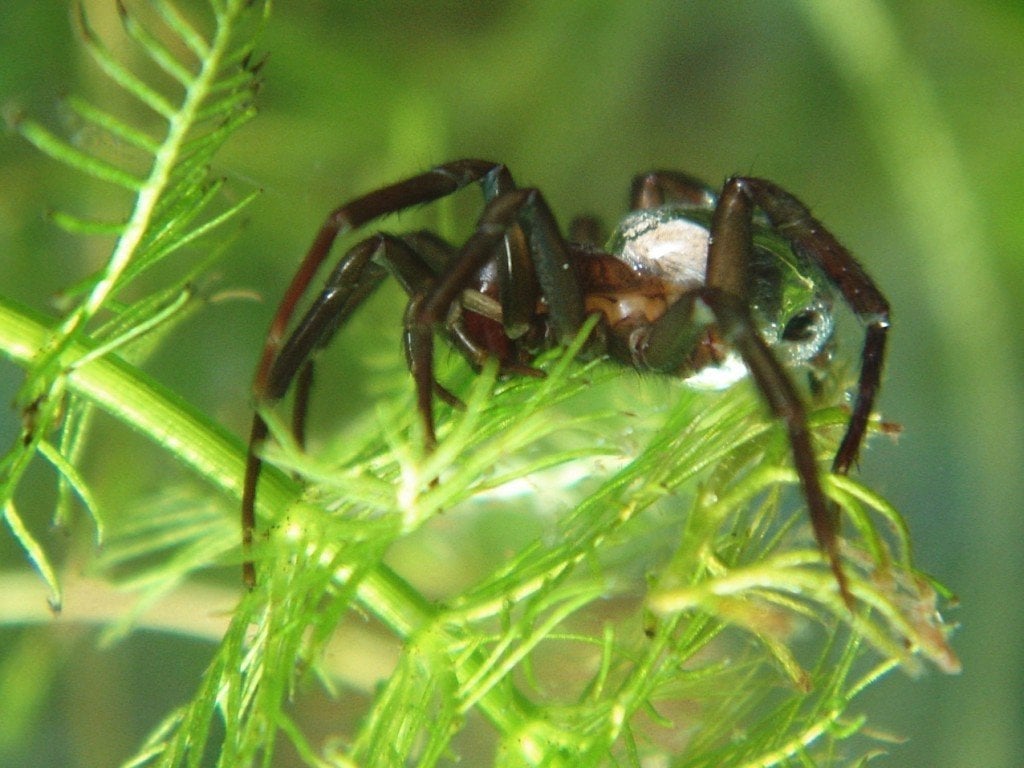
Outside of the water, the diving bell spider has a dark, velvety abdomen and a brown cephalothorax, and you could mistake it for any land spider, especially wolf spiders. But, underwater, the spider looks silvery as the air bubble surrounds its abdomen.
The water spider’s abdomen is covered with hair, which the spider uses to capture an air bubble around its abdomen. Females have shorter chelicera, a shorter pair of front legs, and a shorter body shape than males, which is what gives males diving superiority over females.
Diving Bell Spider Habitat
These spiders live in ponds and eutrophic lakes, marshes, slow-moving streams of water with relatively low pH and dissolved oxygen concentration, and swamps. It needs plants as attachment sites after diving in the water and as anchors for its ‘bubble nest.’
Diving Bell Spider Bite
The diving bell spider bites humans as its fangs can penetrate human skin. The bite is painful, but there are no cases of fatality.
The spider usually preys on crustaceans (e.g., Daphnia and mosquito larvae) and aquatic insects.
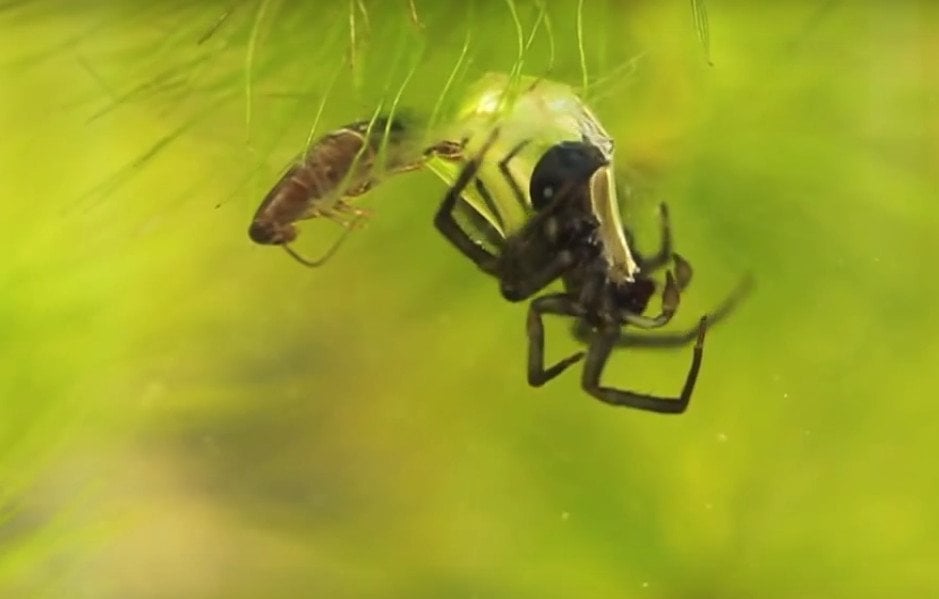
How Does The Diving Bell Spider Breathe Underwater?
Most spider species live on land, but this one spends most of its life underwater. How does it do that?
The diving bell spider lives in a homemade underwater “diving bell.”
It works like this: the spider comes to the surface, traps a bubble of air, and then dives down again to release this bubble under a ‘canopy’, a shelter that is made by a silk sheet fastened horizontally between submerged stems of water plants with silk binds.
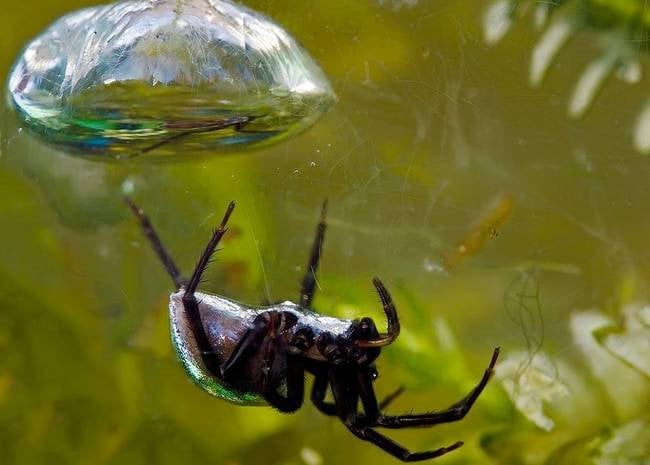
This silk sheet looks like a deep umbrella top. This is where the diving bell spider lives, eats, rests, and reproduces throughout its entire life. Whenever it runs short of air, which doesn’t happen as frequently as it would happen in our case, it simply makes a trip to the surface to grab another air bubble.
The spider can create an air bubble because the hair on its back is hydrophobic, just like oil is hydrophobic and doesn’t mix with water when the spider submerges back into the water after it surfaces its abdomen to collect oxygen-filled air, an air bubble forms around the spider’s back.
The spider’s diving bell can also function as a “physical gill.” A 2011 paper found that the spider’s diving bell can extract oxygen from the surrounding water. This way, the spider does not have to resurface every few hours to replenish the diving bell’s oxygen.
References (click to expand)
- Schütz, D., & Taborsky, M. (2005, December). Mate Choice And Sexual Conflict In The Size Dimorphic Water Spider Argyroneta Aquatica (Araneae, Argyronetidae). Journal of Arachnology. American Arachnological Society.
- Seymour, R. S., & Hetz, S. K. (2011, July 1). The diving bell and the spider: the physical gill of Argyroneta aquatica. Journal of Experimental Biology. The Company of Biologists.
- ADW: Argyroneta aquatica: INFORMATION.
- https://dspace.mit.edu/handle/1721.1/59898
- http://web.archive.org/web/20210918191815/http://ketheridge.sites.gettysburg.edu/Bio340Fall2016/wp-login.php?redirect_to=http%3A%2F%2Fketheridge.sites.gettysburg.edu%2FBio340Fall2016%2Ftag%2Fdiving-bell%2F
- http://web.archive.org/web/20070713223631/http://www.seagrant.wisc.edu/madisonjason11/fun_facts5a.html
- The Adventures of the Diving-Bell Spider.


